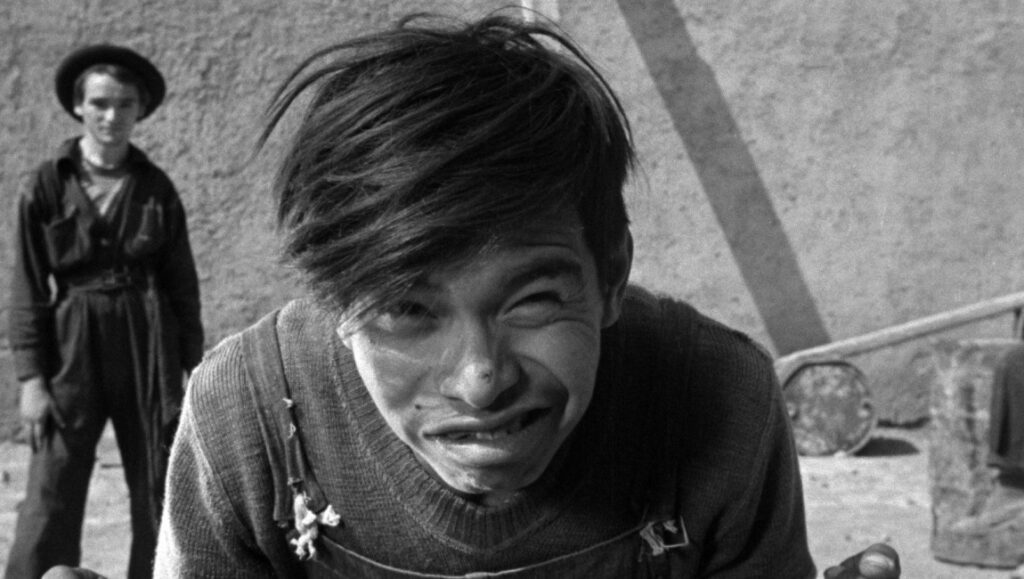Luis Buñuel’s Los olvidados, released, rather perfectly, at the midpoint of the century, is perhaps one of the most uninviting kickoffs to a director’s second life ever. Vittorio De Sica, who kowtowed to more conventional arcs of emotive redemption and resolution in his own films of this era, once asked Buñuel: “Has society done something to you?” This film seems to answer, “Well, of course, to all of us.”
In the Mexico City slums, where teenaged criminal El Jaibo returns to his small-time street gang, Buñuel projects an amoral, epistemologist’s gaze, angry, but tempered enough by objectivity so that there’s no condescension, no patronizing platitudes, no pity. The manufactured documentary images of Las Hurdes (1933), with their alternating extremeness and flatness, return for Los olvidados, effectively outdating any other film that has tried to bottle up the savagery of youth, apart from, say, Jean-Claude Brisseau’s Sound and Fury (1988). The indifferent manner in which protagonists emerge (notably Alfonso Mejía and Robert Cobo, here the dual embodiment of innocence and cruelty) is a hallmark of Buñuel’s work, with unfinished narrative strands left swaying in the wind. Any of the subplots and divergences — a blind street musician’s victimization of an abandoned child, the boys’ reformatory with gates always open as a snobbish symbol of trust — could occupy the center, and the power of Los olvidados comes from its erratic focus, an unevenness that mimics the unsteady ground of everyday life. Acknowledging the anonymizing sprawl of the city, characters are picked off and disappeared, never to return.
As critics tend to hopscotch from Buñuel’s surrealist beginnings, then in Los olvidados to Viridiana (1961) and his later European work, an essential facet of Mexico City and the surrounding country is obscured, as Buñuel used this period to cloister away various characters, underscoring the folly of regionalism. Character in the director’s subsequent films see Mexico City touted as a paragon of progress and education by those in more provincial settings, yet the blood rites of The River and Death (1954) or the lecherousness of Susana (1951) would slot in comfortably with anything presented in Los olvidados. In fact, many films of Buñuel’s Mexican period germinate in this film: the sexualized flanks of beef in a boy’s oedipal dream are recast in a non-oneiric context in El Bruto (1953); adult obliviousness will be then embodied by the eponymous Nazarín; arguments erupt into unfettered violence in Illusion Travels by Streetcar (1954).
The party line on Los olvidados is one that evenly and cleanly divides the realism from its surrealism, as made tauntingly easy by the aforementioned dream sequence, and then later, when an egg is hurled at the camera and literally smashes on the lens. The spartan imagery, however, lets settings speak for themselves: wholly unlivable and destitute. This is the film where Buñuel realizes the failure of surrealism without the realist suffix. His mise en scene no longer requires the soundtracking of Wagner, the blistering cityscape working harder than any intertitle to give a locational and temporal specificity. Buñuel’s career can be traced like a boomerang, and Los olvidados announces that the director had just reached the curve of the parabola, pushed out from his origins as far as he could possibly go.
Part of Kicking the Canon — The Film Canon.
Published as part of InRO Weekly — Volume 1, Issue 8.


Comments are closed.